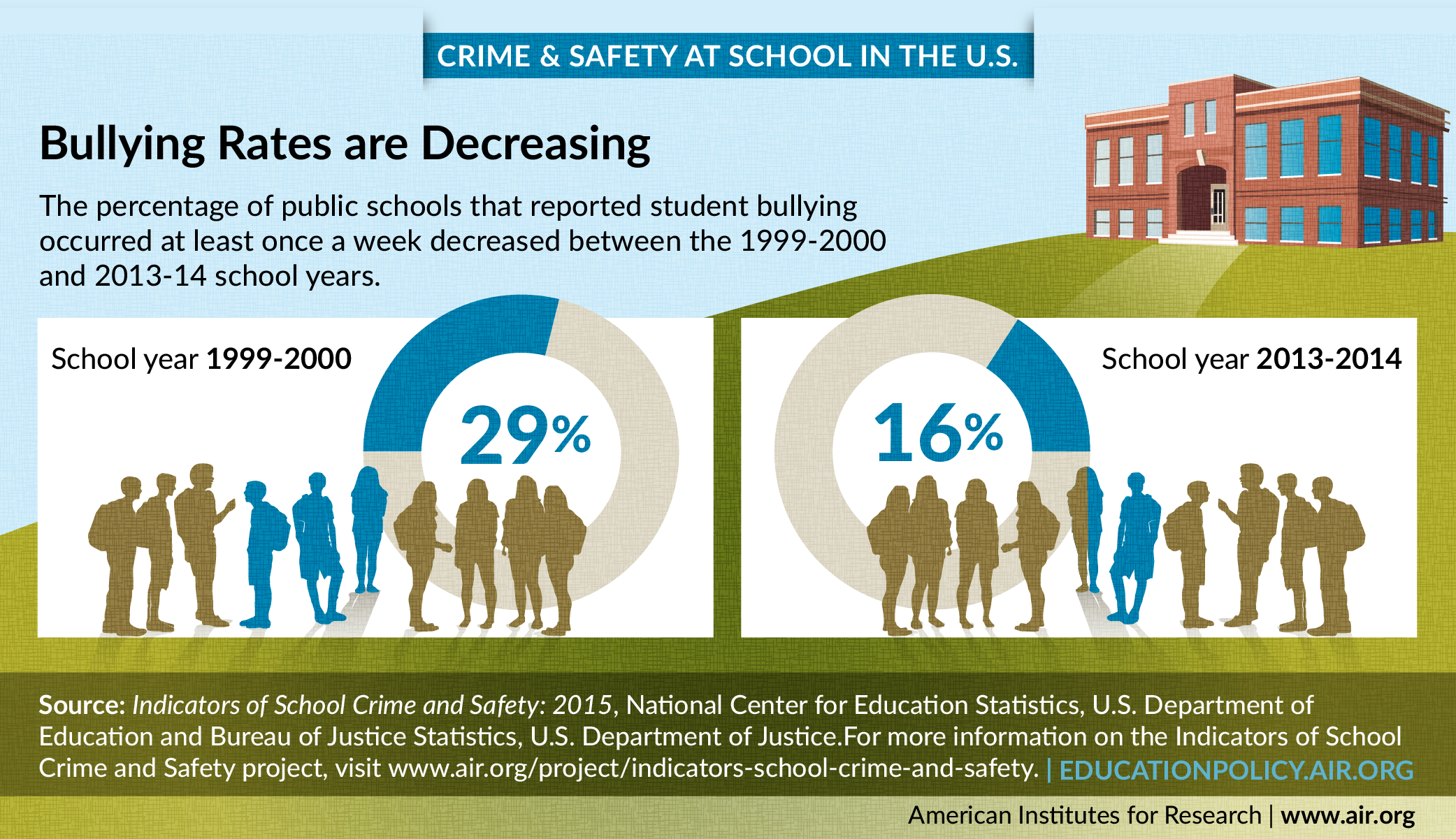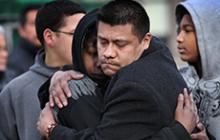Youth Violence Prevention
The complex factors contributing to youth violence in the U.S. and abroad are found at the individual, family, community, and societal levels.
Through centers such as the National Center for Healthy Safe Children, the National Center on Safe Supportive Learning Environments, and the Violence Prevention Technical Assistance Center, AIR provides resources that support the overall well-being of all children and youth.
Read more about our public health approach to youth violence prevention, which includes research, evaluation, and training and technical assistance across multiple systems, and addresses topics such as bullying, mental health, mentoring, child welfare, and juvenile justice.
School Violence
Research on Lowering Violence in Communities and Schools (ReSOLV)
In support of the National Institute of Justice's Comprehensive School Safety Initative, AIR is conducting Research on Lowering Violence in Communities and Schools (ReSOLV) in partnership with Virginia Tech, The Wandersman Group, and a group of nationally recognized school safety experts. This longitudinal study will examine the association of school safety and student outcomes with school-based risk and protective factors and readiness to adopt a comprehensive school safety approach.
Bullying
Bullying Prevention
As more is being learned about the negative psychological and physical effects of bullying, researchers are focusing on how to address the problem. The AIR research and resources featured here relate to efforts to prevent violence in schools and help young people feel safe and supported.
A Public Health Approach to School Bullying: A Q&A With Xan Young
Xan Young, senior technical assistance consultant at AIR, directs the Violence Prevention Technical Assistance Center, funded by the Centers for Disease Control and Prevention. In this Q&A, Young shares her insights on bullying and AIR’s work on this issue.
Cautious Optimism and a Path Forward to Reduce Bullying
Bullying is on the decline, but evidence is mounting that it is even more toxic for children and adolescents than previously thought. In this commentary, David Osher suggests the need for an interim strategy until anti-bullying efforts are in full force, such as the infusion approach, which integrates anti-bullying initiatives into other school-wide activities.
Dating Violence and Abuse
Raising a Red Flag on Dating Violence Evaluation of a Low-Resource, College-Based Bystander Behavior Intervention Program
Encouraging bystanders to intervene safely and effectively in situations that could escalate to violence—known as bystander behavior programs—is a growing yet largely untested strategy to prevent dating violence. Findings showed an increase in bystander behaviors, such as encouraging a friend who may be in an abusive relationship to get help, after watching a 30-min presentation on dating violence.
Preventing, Assessing, and Intervening in Teen Dating Abuse
Research shows that schools can make a difference in preventing interpersonal teen violence. Our National Center on Safe Supportive Learning Environments produced this training toolkit on teenage dating abuse for instructional support personnel, such as guidance counselors, social workers, psychologists, nurses, and other professionals.
Youth Violence Prevention in the U.S. and Abroad
Massachusetts’s Safe and Successful Youth Initiative (SSYI) Continues to Reduce Violent Crime and Improve Lives
Since 2013, AIR, in partnership with WestEd’s Justice & Prevention Research Center, has served as the evaluator for the Massachusetts Safe and Successful Youth Initiative (SSYI). SSYI is a multifaceted, community-based strategy that combines public health and public safety approaches to eliminate serious violence among proven-risk, urban youth ages 17–24.
Latin America and the Caribbean - Youth Violence Prevention
The Latin American and Caribbean region is home to less than 8% of the world’s population, but its rates of crime and violence are some of the highest in the world, with 37% of all homicides. The Latin America and the Caribbean-Youth Violence Prevention project helps USAID and its partners successfully implement crime and violence prevention programming in the region.
Alliance pour la Protection des Enfants - Haiti
Violence against children is an enormous challenge in Haiti. Recovering from political instability and natural disaster, Haiti has a weak service delivery system, as well as inadequate response and referral systems for child protection. There are ongoing efforts to quell family and community violence in Haiti, and AIR is working with a variety of local child protection stakeholders to address patterns of behavior and attitudes towards violence, abuse, neglect, and exploitation of Haitian children.


